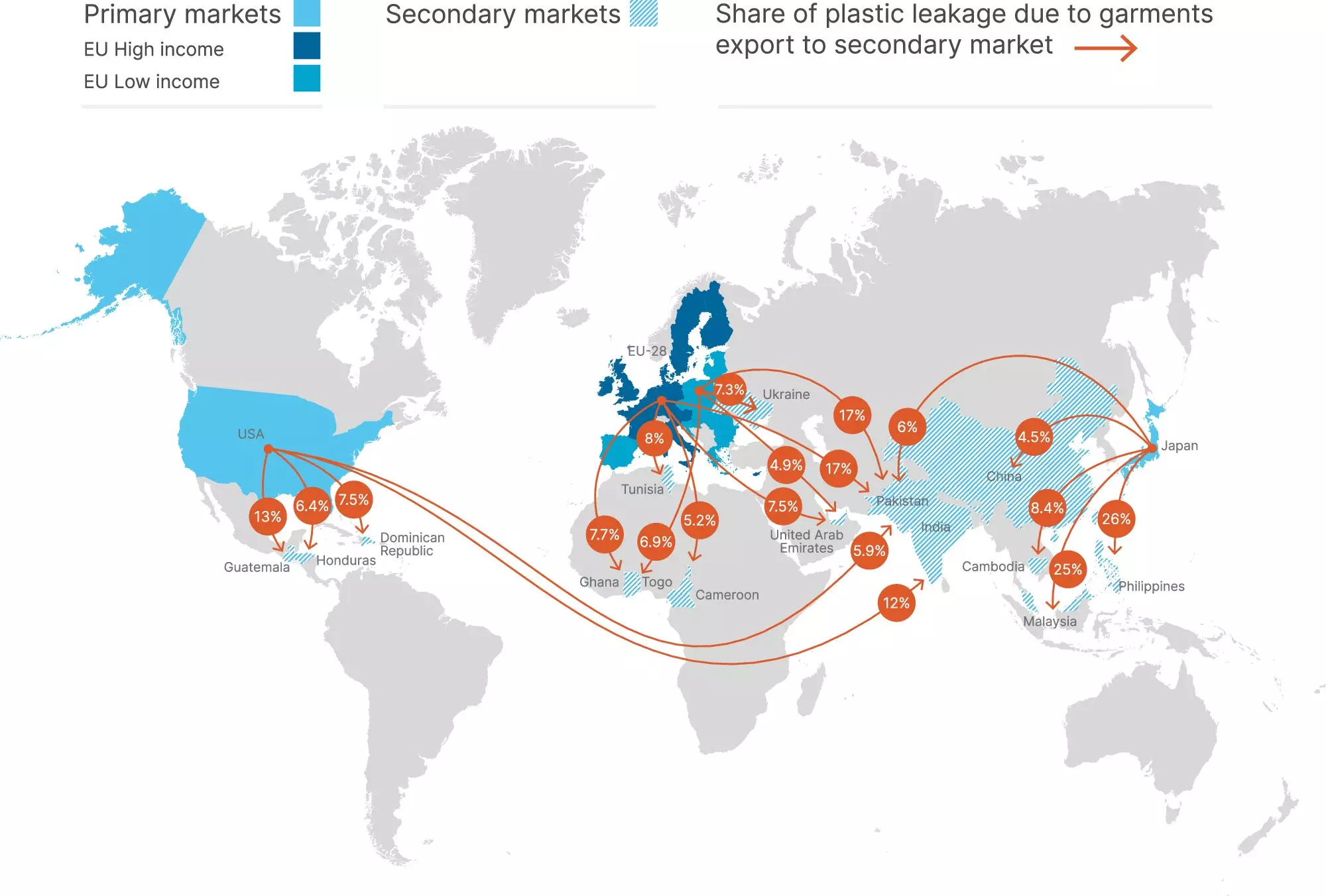The apparel industry has been identified as a significant source of plastic pollution, with millions of tons of plastic waste leaking into the environment each year. A recent study conducted by researchers at North Carolina State University revealed that in 2019 alone, global apparel consumption led to over 20 million tons of plastic waste. Shockingly, around 40% of this waste was improperly managed and ended up as environmental pollution, a process known as “plastic leakage.”
The study found that textile waste from the apparel industry can be attributed to two primary sources: clothing made from synthetic materials such as polyester, nylon, and acrylic, and clothing made from natural fibers like cotton. Researchers delved deep into the entire lifecycle of apparel products, including the plastics used for packaging and transportation. Synthetic apparel emerged as the largest contributor to plastic waste, accounting for a staggering 89% of all plastic waste from the global apparel industry in 2019.
Various factors were identified as contributors to plastic leakage from the apparel industry. Disposal of clothes, particularly synthetic apparel, was highlighted as a major source of plastic waste. Manufacturing processes, packaging materials, tire abrasion during transport, and microplastics released during laundry also played significant roles in plastic pollution. Moreover, the study indicated that the destination of apparel sales did not necessarily align with where plastic waste ended up, shedding light on the complexities of global apparel consumption patterns.
The study underscored the role of high-income countries like the United States and Japan in contributing to plastic pollution. A ‘fast fashion’ culture prevalent in these countries, characterized by frequent purchases and short usage periods of clothing items, generated a substantial amount of plastic waste. Interestingly, most of this pollution was found to occur in lower-income countries where used clothing items from high-income countries end up. This highlights the need for a reevaluation of consumption habits and waste management systems in high-income countries to curb plastic leakage.
The study called for significant changes within the apparel sector to transition towards a more sustainable and circular framework. Emphasizing the importance of recycling materials and reducing waste, researchers recommended the greater use of renewable and non-synthetic textiles in apparel production. This shift towards a more environmentally conscious approach is essential to mitigate the adverse impacts of plastic pollution originating from the global apparel industry.
The findings of the study accentuate the pressing need for collective action to address the environmental consequences of the apparel industry. By reevaluating consumption patterns, enhancing waste management practices, and promoting sustainable alternatives, the industry can mitigate its plastic footprint and move towards a more environmentally sustainable future.


Leave a Reply